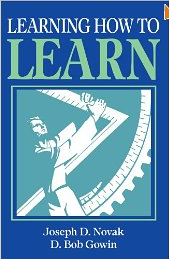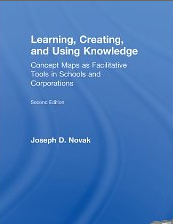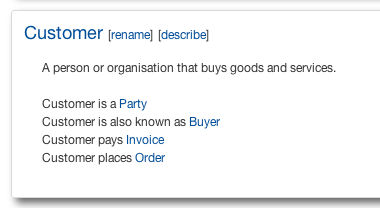Welcome to conceptmaps.io :)
You can browse all the published concept maps without signing in. If you'd like to create your own concept maps, all you have to do is sign in with Twitter. It's free!
Frequently Asked Questions
This section contains answers to some of our frequently asked questions.
Where do Concept Maps come from?
Concept Maps have been used for decades and seem to have been most common in the education arena. Going back to the late 1970's, Joseph D. Novak has been writing about the benefits of concept maps for teaching and learning. The two books of his that have informed conceptmaps.io are "Learning How To Learn" and "Learning, Creating and Using Knowledge".
"Learning How To Learn" by Joseph D. Novak et al.

Paperback: 216 pages
Publisher: Cambridge University Press; 1 edition (September 28, 1984)
Language: English
ISBN-10: 0521319269
ISBN-13: 978-0521319263
"Learning, Creating and Using Knowledge" by Joseph D. Novak et al.

Paperback: 272 pages
Publisher: Routledge; 1 edition (January 1, 1998)
Language: English
ISBN-10: 0805826262
ISBN-13: 978-0805826265
What makes a good Concept Map?
Here are a few guidelines that might help your concept maps work as effectively as possible for your readers.
Try to make propositions that read like sentences you would say out loud. Examples might include "Customer places Order" and "Order has Total Value".
That being said, try to avoid articles before concepts ("a", "an", "the") as you will most likely tie yourself in knots wondering whether the articles are part of the concepts or the predicates. So you should not make a proposition like this: "A Customer places An Order".
Generally, concepts should be nouns or noun phrases and predicates should be verbs or verb phrases.
Try to avoid vague predicates like "is associated with", as in "Customer is associated with Sales Person". Try to nut out what the relationship is more specifically; for example, it might be better to say "Sales Person is assigned to Customer" or "Customer orders from Sales Person" depending on the context.
Every concept in your domain should have a description. However, you want to avoid descriptions that repeat what the reader can already learn from the propositions in your concept map. This means that concept descriptions tend to be short because the propositions also form part of the concept summary. An example is shown below.

When other people look at your map, they might suggest concepts or relationships that are missing. You may decide they are not required, but stay on the lookout for missing concepts and connections. This is a good thing to ask your collaborators to help with.
We tend to recommend concepts be singular, as in "Customer places Order" rather than plural, as in "Customers place Orders". This is because concepts tend to represent classes of things rather than groups of things. It's not a hard and fast rule, but it's a good rule of thumb.
How do maps get published?
It's an administrative function to publish concept maps at this stage, so if you have a map that you think is ready to be published, please just let us know and we'll work with you to get it done.
How do I delete a Concept?
The simplest way to delete a concept is to simply remove all the propositions that refer to it. See this lesson for details on batch editing of propositions.
How do I search for a Concept?
There is currently no facility for searching for a concept across maps. Let us know if this is a problem for you. In the meantime, simply use your browser's text searching feature to locate a concept on a domain page.
Can I add attachments and links to Concepts?
You can't upload attachments in conceptmaps.io, but you can add links to any resource for which you have a URL. See this lesson for how to do that.